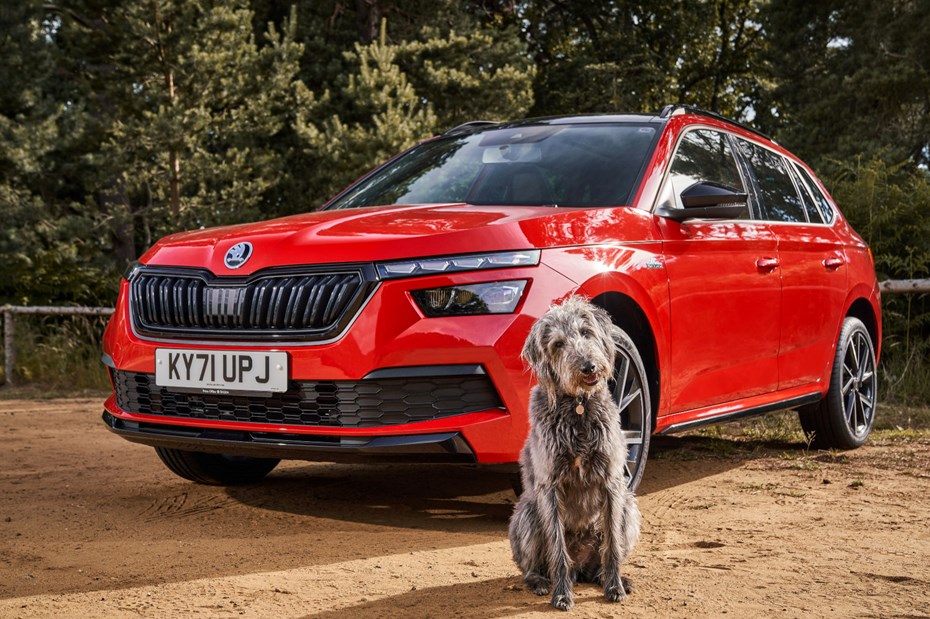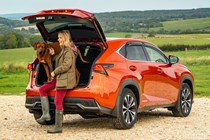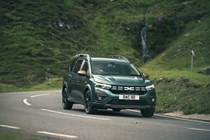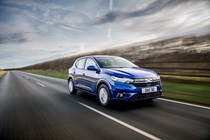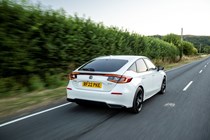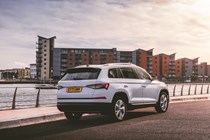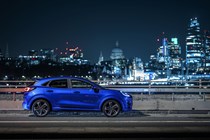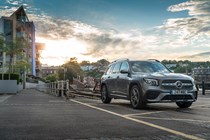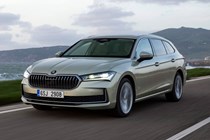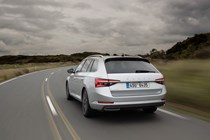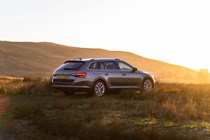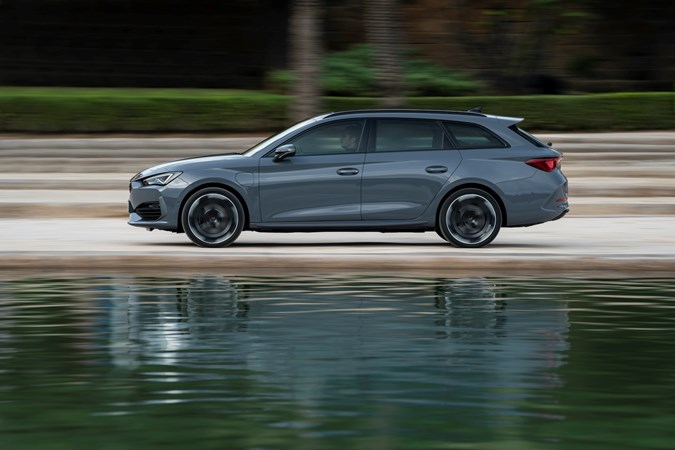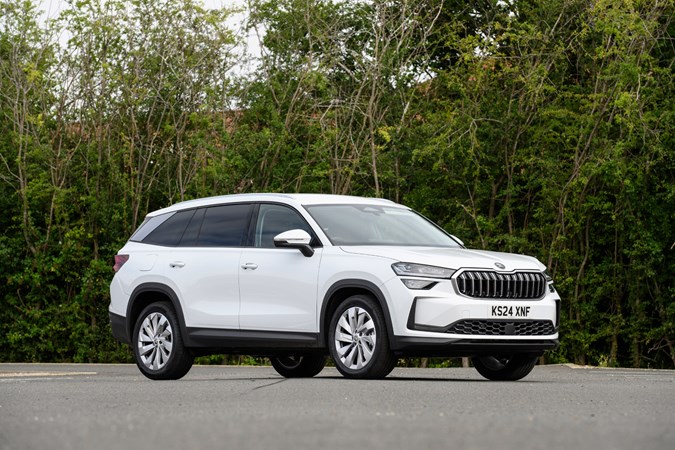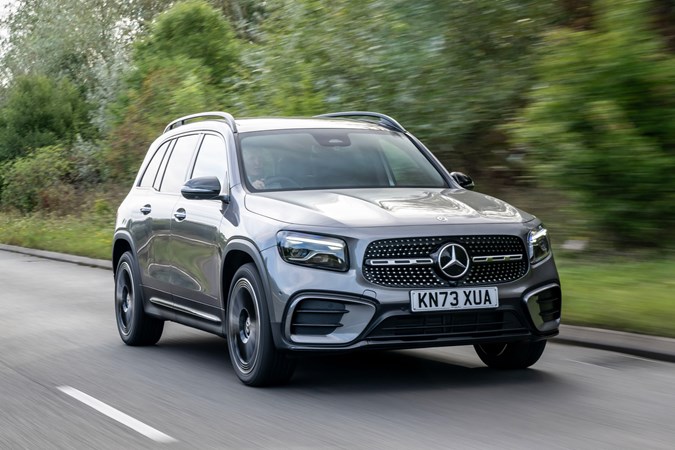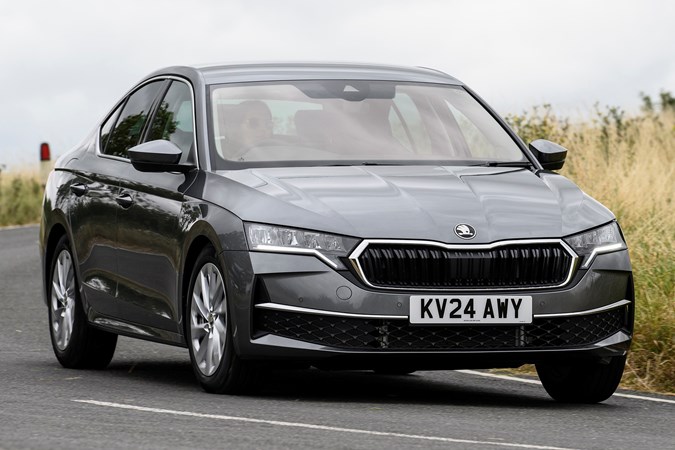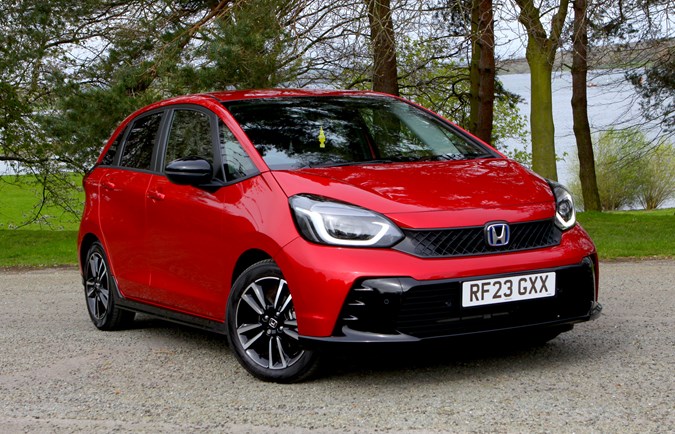According to research by Skoda there are an estimated 9.6 million dog owners in the UK and seven million of them travel with their dog in the car at least once per week. So it’s only fitting that people might want some help in researching the best car for dog owners.
Before we get into the car advice, we have a warning for all dog owners. According to the Highway Code, dogs need to be suitably secured so they avoid distracting the driver and prevent injury in the case of a sudden stop. Failing to secure your dog can lead to a fine of up to £5,000, so a car harness is well worth considering.
Interestingly, just 51% of people polled in the research said they always correctly secured their dog while driving, with 14% only doing it some of the time and 9% admitting that they have never secured their dog safely in the car. Below, Parkers picks 2025’s best cars for dogs and their owners, naming the finest vehicles on sale today, in a variety of sizes and price points for every need and budget.
Best estate cars for dogs
Dog-friendly car boots are often found in estate cars. These family workhorses have the advantage of being lower to the ground than SUVs, which makes it easier for our canine chums to climb in and out of. Smaller breeds and older dogs, in particular, may not find it easy to leap into a boot high from ground level. Any boot opening 60-70cm off the ground should make for easier dog access.
Estate cars typically have a boxier, more upright rear end for a voluminous boot space and we find that dogs can easily get comfortable in most wagons. We often recommend that the best car for large dogs is an estate car for that reason, and you can usually fit a divider so you can carry your pet and your possessions without your shopping being at risk of being eaten on the run back from the supermarket.
Comfortable and practical long-range EV
Based on the ID.7 hatchback, which we recently awarded our Best Large Family Car, the Tourer is a more practical version with a more useful boot and shape better suited to pet owners. The ID.7 is a supremely comfortable and refined EV that even works well for long distances owing to its claimed range of up to 424 miles – one of the longest of any electric car. Despite its high list price, there are currently some exceptional leasing deals on offer that can get you behind the wheel for less than £300 a month.
To find out more, read our full Volkswagen ID.7 Tourer review
Pros
- Spacious shape and large boot
- Comfortable and very refined
- Long electric range
Cons
- Over-reliance on the touchscreen for key functions
- GTX model not worth the extra cash
Huge boot and very comfortable ride
With a low-loading lip, it's ideal for easy access for dogs, with the boot large enough for multiple large pooches. A range of useful boot storage elements are ideal for pet owners, too, while the Superb's comfortable ride is another big advantage. The new Superb also continues to be available as a plug-in hybrid, though the boot in this version isn't quite so spacious.
To find out more, read our full Skoda Superb Estate review
Pros
- Largest boot of any estate car
- Very comfortable
- Generous equipment levels
Cons
- Boot in the plug-in hybrid isn't as large
- Not the bargain it once was
Loads of space given its footprint
Those after something totally sensible are best served by the regular SEAT Leon Estate, while those who want something fast (or fast-looking) should look at the Cupra Leon Estate. Both are generally available with terrific finance terms.
To find out more, read our full Seat Leon Estate review
Pros
- Huge boot for its size
- Great legroom
- Hotter Cupra models available
Cons
- Frustrating infotainment system
- People will ask why you didn't buy a Golf
Best SUV for dogs
The best cars for big dogs are often SUVs (short for sports utility vehicles). These are raised-up 4x4 style cars whose proportions are bloated outside and in, making them a popular choice for families seeking extra space.
Just be mindful that the raised driving position that affords that usefully elevated view out also means that the loadbay of an SUV is typically higher from the ground (this type of car can have the boot floor 80cm off the ground). Can your dog jump in unaided? Or will you constantly have to lift your pride and joy in and out? This could become mucky after winter walks in Mudfordshire…
Like a Superb Estate but taller and with more seats
The latest Kodiaq shares lots in common with the Superb we've already mentioned on this list, including its classy and easy-to-use interior and comfortable road manners, even if this SUV isn't quite as engaging to drive the Superb – if that matters to you. It's well-equipped as standard and is available with a choice of petrol, diesel and a plug-in hybrid. Four-wheel-drive models are also available if you're looking for something a bit more adventurous.
To find out more, read our full Skoda Kodiaq review
Pros
- Seven seats available
- Huge boot
- Skoda offers a range of dog accessories
Cons
- Expensive optional extras
- Not very enjoyable to drive
Posh SUV maximises space
Petrol, diesel and electric versions are available, along with the all-electric Mercedes EQB. You can have front or four-wheel drive too, although don't expect to go that far off the beaten track. An updated version of the GLB has been announced, so expect discounts on the outgoing model.
To find out more, read our full Mercedes GLB review
Pros
- Petrol, diesel and electric models available
- Sporty AMG version offered
- Decent standard equipment
Cons
- The best tech costs extra
- Third row isn't the most spacious
The most bang for your buck
As it’s based on a regular hatchback, four-wheel drive in’t an option (you’ll need a Dacia Duster for that) and nor is a diesel engine. Instead, there’s the manual only 1.0-litre turbo that’s a pretty good fit but doesn feel a little underpowered when you’re fully loaded. Alternatively, there’s the auto-only Hybrid which is a bit punchier and more efficient.
To find out more, read our full Dacia Jogger review
Pros
- Very low price
- Huge boot
- Efficient petrol and hybrid engines
Cons
- Low Euro NCAP score
- Not in any way luxurious
Best hatchbacks for dogs
Your typical hatchback can normally carry most dogs in reasonable comfort, but bootspace is inevitably smaller than in an equivalent SUV or estate car. More compact breeds of dog should be fine in here, but larger dogs may get a little claustrophobic. Be sure to measure up before you decide.
Hatchbacks have the advantage of being cheaper and more plentiful, so can be a smart buy, especially if you don’t need acres of space. The best options for dogs on our shortlist are:
A boot bigger than some estates
Its excellent petrol and diesel engines provide strong fuel economy, while a plug-in hybrid is expected to rejoin the line-up in 2025. A recent update has also addressed some previous tech gremlins and given the interior a higher-quality finish. The Octavia isn't the sportiest thing to drive, Octavia vRS included, but it is comfortable especially if you stick to small wheels.
To find out more, read our full Skoda Octavia review
Pros
- Massive boot
- Comfortable ride
- Good value
Cons
- Touchscreen controls too many functions
- The vRS could be more fun
Far roomier than you might expect
The Sandero is based on the Renault Clio and offers surprising space inside especially if you fold down the rear seats. The unprotected painted load lip might show a few claw marks especially as it isn't the lowest, but it's still a better bet than most smaller superminis.
To find out more, read our full Dacia Sandero review
Pros
- Decent boot
- Cheap to buy or finance
- Frugal
Cons
- Not the best for big dogs
- Limited engine choice
Compact Jazz offers so much more interior space than you'd expect
It also has 'Magic Seats' in the rear that fold up like chairs in a theatre and then can fold completely flat, making this a very practical small car. Strong fuel economy and an excellent reliability reputation are further reasons to consider it.
To find out more, read our full Honda Jazz review
Pros
- Very practical for a small car
- Great fuel economy
- Easy-to-use technology
Cons
- Only one engine available
- More expensive than its supermini rivals
Which type of car is best for dogs?
Let’s cover the basics. It sounds blindingly obvious, but you’ll need a vehicle with a decent-sized boot. Your furry friend won’t appreciate being bundled into a tiny trunk. Good cars for dogs will have a boot commensurately sized for the animal in question, and of course you’ll want something that has durable materials.
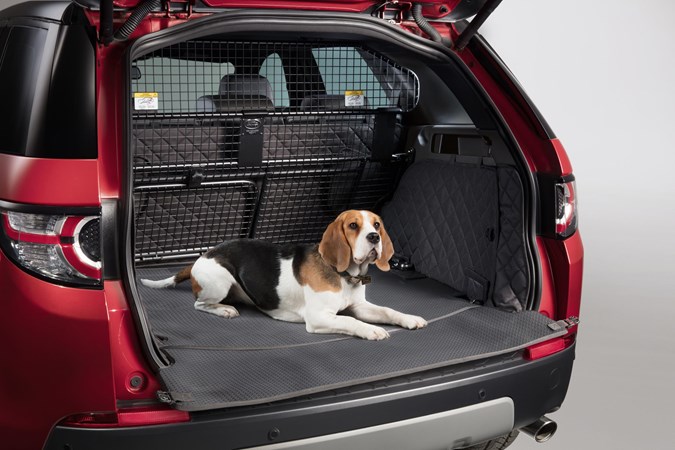
We’re looking for a large opening, typically found on a hatchback, estate car or SUV (sometimes called a crossover or 4x4). Sports cars, convertibles and saloons are less practical in this regard, and you’ll be forced to carry your dog in the passenger compartment in these types of cars. You should never shut a dog in a boot with no window, and this rules out a surprising number of popular makes and models, including saloon cars.
Just remember to unlatch the luggage cover or parcel shelf; you’ll need to leave these at home, so your dog can see out and watch the world go by.
Read on for our FAQ with advice on the best dog guards and national rules about transporting dogs safely.
FAQ
Can dogs travel in the boot of a car?
Yes, but you must do so safely and humanely. The Welfare of Animals (Transport) (England) Order 2006 and The Welfare of Animals (Transport) (Wales) Order 2007 dictate that you must not transport your dog in a way that may cause injury or suffering to the animal.
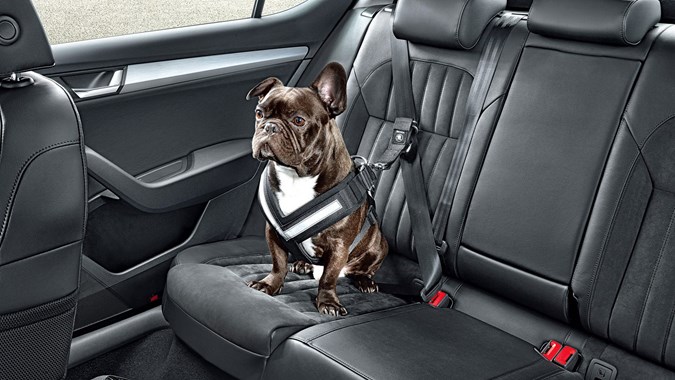
How to transport a dog in a car in the UK
The Highway Code instructs drivers to make sure any pets are sufficiently restrained so that they won’t distract or injure the driver and occupants of the car in an emergency stop. This is why we recommend the use of a dog crate or harness, or a simple divider to keep your hound safely in the boot.
My dog finds it hard to climb into the car. What do you recommend?
Look for a boot that’s lower to the ground. Take a tape measure to the showroom with you, so you can compare access. More expensive cars with air suspension often let you lower the car for ease of loading – look out for a button in the boot for this. Alternatively, consider a dog ramp for cars – we list the best here in our handy round-up.
How much space does my dog need in a car?
The Royal Society for the Prevention of Cruelty to Animals (RSPCA) says: ‘When transporting your dog in a crate or container, you should ensure that it has enough room to sit and stand up at full height, turn around easily and lie down in a natural position. You should also ensure that your dog can see out of the container and that there is enough ventilation and airflow. Suitable bedding should be placed on the floor to prevent the dog from slipping around during the journey.’
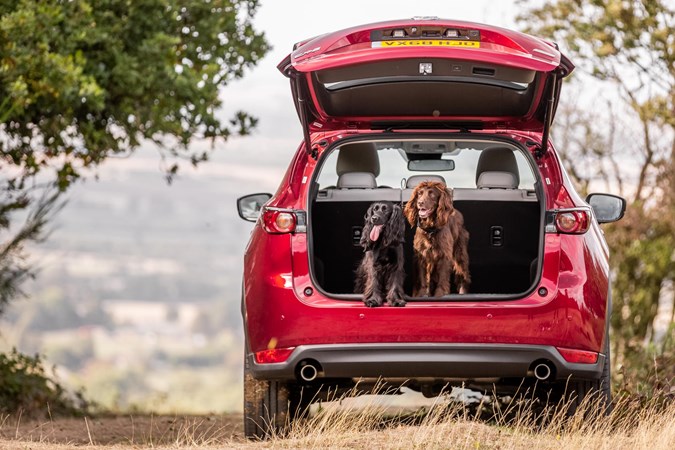
Can I leave my dog in the car when parked up?
Yes, but only for short periods of time. Always leave a window ajar for fresh air, remember to disable your alarm’s interior motion sensor (read the handbook) and never leave your pet in a hot car. Interiors can quickly become stifling and dangerous to dogs on a hot sunny day. This is cruel and illegal.
Car manufacturers are making use of electric propulsion to help keep dogs safe, though. Tesla now has a dog mode that leaves the climate control running while the car’s locked, for instance.
What else do I need to carry my dog in the boot?
Prepare the space. We’d recommend a plastic boot liner, widely available for most models, to keep muddy paw prints, water and any accidents off your carpet. This will make it easier to keep your car clean – and pay dividends come resale time, so you don’t have to sell your vehicle with that soiled, doggy smell. It’s useful to have a dog bed that you can keep in your car: somewhere your pet can call home and snooze in while you drive off on adventures anew. And don’t forget a supply of treats, dog poo bags and a portable water bowl so you can look after your pup on his or her travels.
Alan Taylor-Jones is the New Cars Editor for the Bauer Digital Automotive Hub, working on both Parkers and sister title CAR. He’s been reviewing cars for nearly a decade, so really knows his onions.
Just so you know, we may receive a commission or other compensation from the links on this website - read why you should trust us.


